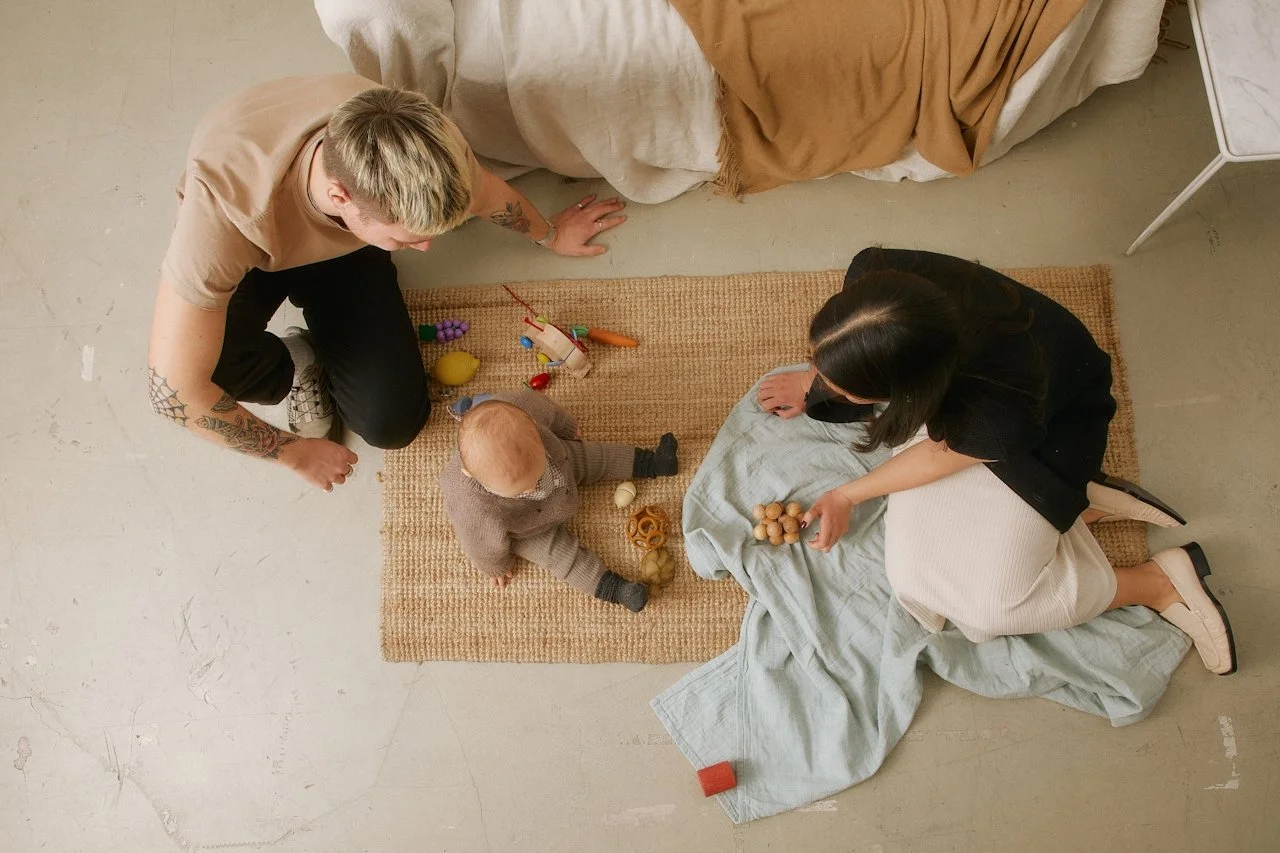The Hidden Power of Play: A Parent's Guide to What's Really Happening on the Floor.
As parents, we spend a lot of time watching our children play. We see the LEGO towers rise and fall, we listen to the elaborate stories acted out by dolls, and we mediate the high-stakes negotiations over whose turn it is. It can look like simple fun—and it is! But underneath the surface, something truly profound is happening.
Play is the most important work of childhood. It's not just a way to pass the time; it's the laboratory where our children build their brains, learn to be human, and figure out how the world works.
Let's pull back the curtain on the different kinds of play you see every day and discover the incredible development happening right on your living room floor.
How They Play with Others: The Social Ladder
Have you ever noticed how a toddler plays next to another toddler, but a five-year-old plays with them? That's not an accident; it's a journey up the social ladder of play.
Solitary Play (Playing Alone): When your toddler is completely absorbed in their own world, stacking blocks or driving a car, they are building focus and concentration. This independent exploration is the foundation of self-reliance.
Parallel Play (Playing Beside): This is the classic toddler move. Two kids in a sandbox, each with their own shovel, playing happily but separately. They are learning to be comfortable around their peers before they're ready to engage. It's the social equivalent of dipping a toe in the water.
Cooperative Play (Playing Together): This is the ultimate goal. When a group of preschoolers decides to build a fort, assign roles ("You be the dog!"), and work together, they are practicing negotiation, teamwork, compromise, and communication—all the skills they'll need for the rest of their lives.
What They're Doing: The Building Blocks of Growth
Beyond the social aspect, the type of play your child chooses is directly linked to the skills they are developing.
Physical Play: All that running, jumping, climbing, and wrestling? That's not just burning off energy. It’s building gross motor skills, coordination, and an understanding of their body's limits. It teaches them to be brave and resilient.
Constructive Play: When your child builds a tower with blocks, draws a picture, or makes a "potion" out of mud and leaves, they are being a scientist and an engineer. This type of play fosters problem-solving, persistence, and the incredible satisfaction of bringing an idea to life.
Imaginative Play: This is where the magic happens. When a cardboard box becomes a rocket ship or they pretend to be a doctor, they are developing empathy, practicing storytelling, and exploring complex emotions in a safe way. It is the single most important engine for creativity.
Rule-Based Play: From a simple game of tag to a complex board game, this is how children learn about fairness, strategy, and the structure of social agreements. It's their first introduction to the idea that society runs on shared rules.
Where It All Comes Together
When we understand what's really happening during play, we see our role in a new light. It's not just about providing the toys; it's about creating the environment. It's about honoring their need for messy, imaginative creation while also giving them the structure of a board game. It's knowing that when they play alone, they are building focus, and when they play together, they are building a community.
Play is the bridge between who our children are and who they are becoming. By seeing the hidden power in their play, we can better support their incredible journey.
Ready to create a space that supports every type of play?
At Liza & Toph, we bridge the science of child development with the art of design to create beautiful, intentional play spaces.

